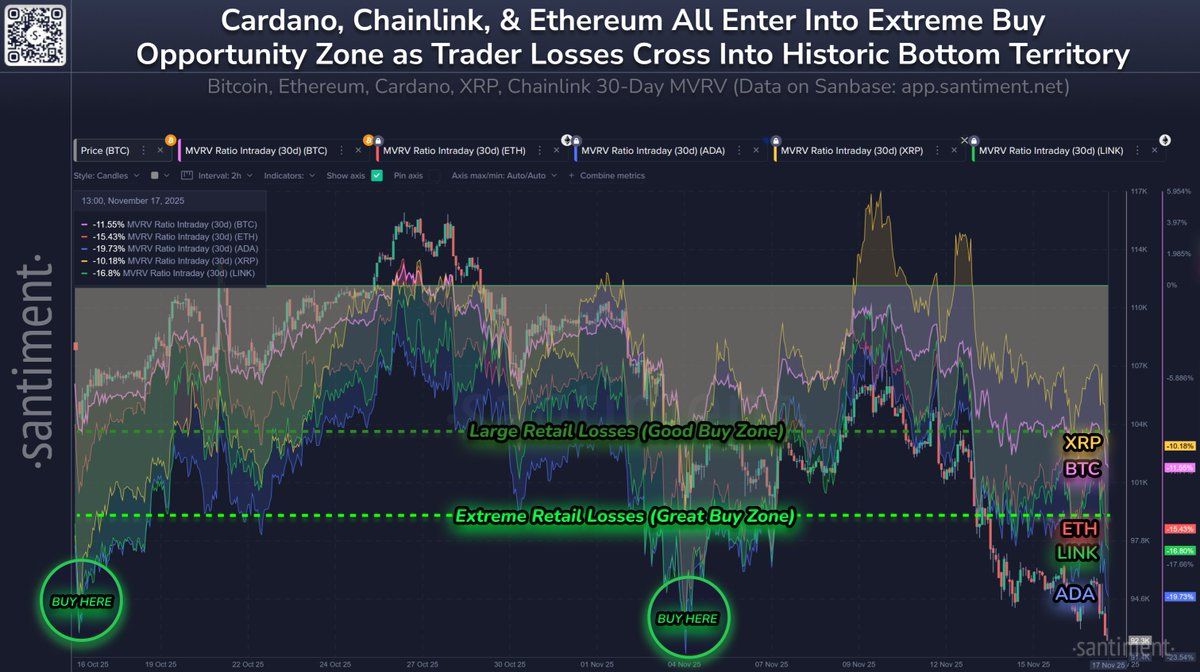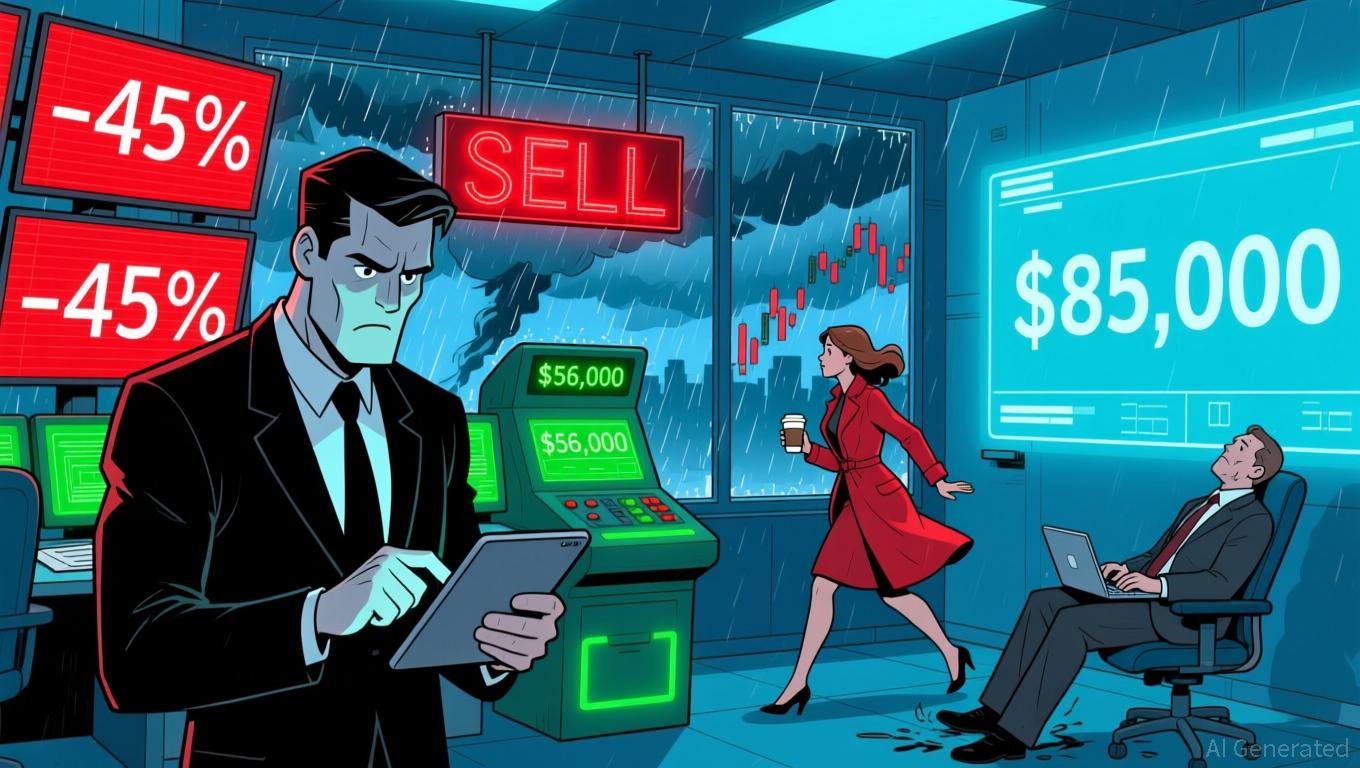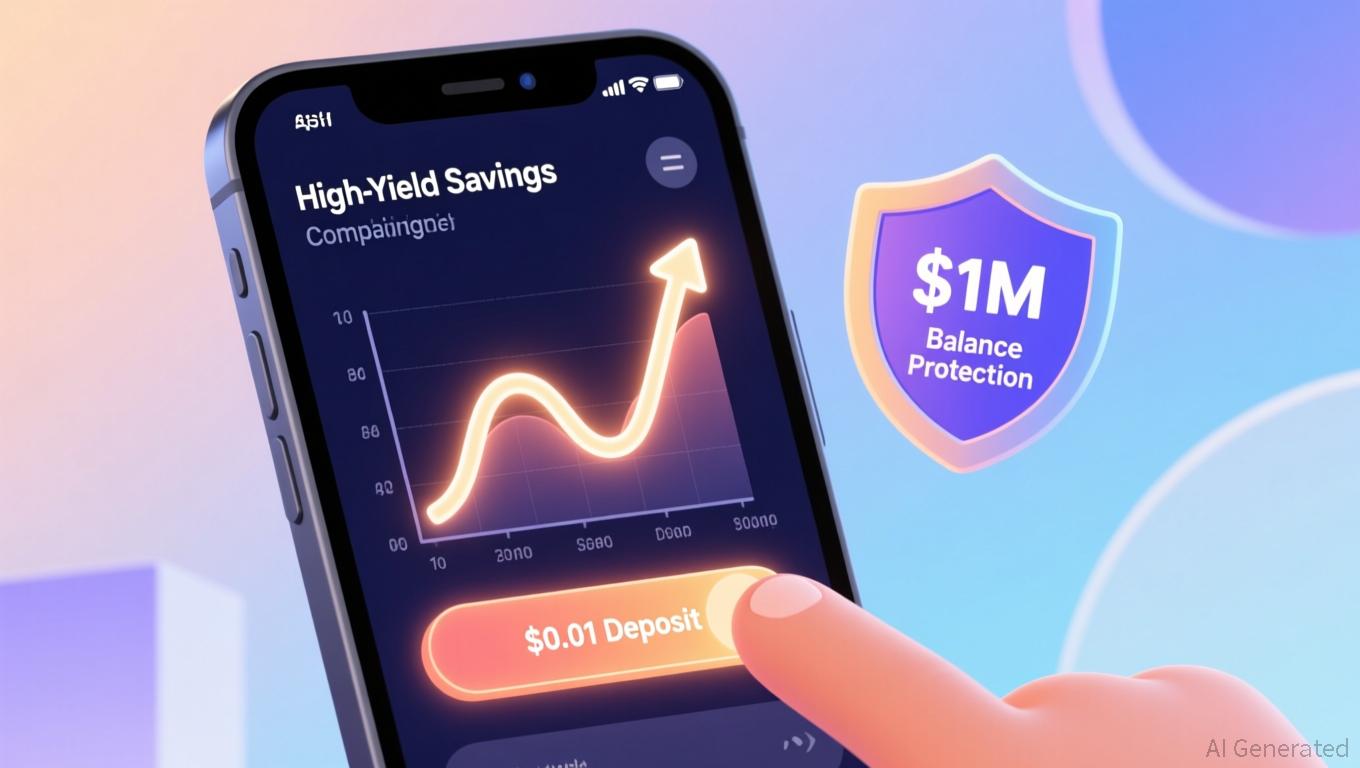Why Cardano (ADA) Could Be in Its Strongest Buying Window of 2025
Cardano shows rare undervaluation signals and growing on-chain strength, yet price action remains fragile after losing major support.
Cardano (ADA) has entered an “Extreme Buy” zone, with its Market Value to Realized Value (MVRV) ratio dropping amid persistent market volatility.
However, emerging conflicting signals are creating a challenging environment for investors, as technical indicators point to the possibility of further downside.
On-Chain Data Shows Undervaluation and Adoption
Analytics platform Santiment noted that the majority of top cryptocurrencies are now showing sharp negative returns among traders. Cardano investors are experiencing some of the deepest losses in the market. On-chain data indicates that the 30-day MVRV ratio has slipped to -19.7%.
 Crypto Assets’ MVRV. Source:
X/Santiment
Crypto Assets’ MVRV. Source:
X/Santiment
MVRV is a key metric that measures whether a cryptocurrency is overvalued or undervalued by comparing its current market value to the realized value. When the MVRV ratio exceeds 1, most holders are in profit, often indicating an overheated market with a higher risk of corrections.
When the ratio drops below 1, holders are on average at a loss, marking undervalued periods. The latest drawdown has pushed ADA into what Santiment classifies as an “Extreme Buy Zone”, a level that often precedes market recoveries.
“In a zero sum game, buy assets when average trade returns of your peers are in extreme negatives. The lower MVRV’s go, the higher the probability is of a rapid recovery,” Santiment wrote.
At the same time, Cardano’s fundamental growth is steady. TapTools reported that the number of Cardano holders has exceeded 3.17 million. Furthermore, investors have purchased 348 million altcoins in early November.
JUST IN: Cardano $ADA has surpassed 3.175 million holders as long-term wallets continue to grow despite recent market volatility.
— TapTools (@TapTools) November 17, 2025
Meanwhile, Alphractal, a market intelligence firm, pointed out that public interest in the crypto sector has dipped to its lowest since June. According to their analysis, such patterns have frequently preceded notable opportunities.
“When Bitcoin and crypto prices fall, people lose motivation fast. Searches go down, curiosity fades, and topics like exchanges, altcoins, and market trends practically disappear from the radar. And what usually brings the interest back? Volatility. And, let’s be honest — prices moving up,” Alphractal posted.
Is ADA Positioned For Further Declines?
Despite this, the recent price performance suggests a more cautious outlook. The token has fallen 25.6% over the last month, and the sell-off has pushed Cardano below a key yearly support zone.
The $0.50 level, a price area that has served as a structural anchor since November 2024, has now been breached. ADA is currently trading near $0.46, down 4.72% over the past 24 hours.
 Cardano (ADA) Price Performance. Source:
BeInCrypto Markets
Cardano (ADA) Price Performance. Source:
BeInCrypto Markets
Moreover, analysts warn that the next major downside target could be in the $0.30 region.
LIKE I SAID, $ADA IS A DONE DEALSENDING IT BACK TO ITS CREATOR
— BIGGEST DC (@dreamchaserjtk) November 18, 2025
Ultimately, whether Cardano marks a major buying opportunity depends on one’s risk tolerance and investment timeline. The convergence of undervaluation signals and on-chain growth supports a bullish long-term case. However, technical factors call for a cautious approach.
Read the article at BeInCryptoDisclaimer: The content of this article solely reflects the author's opinion and does not represent the platform in any capacity. This article is not intended to serve as a reference for making investment decisions.
You may also like
Ethereum News Update: The Dangers of Leverage: Crypto Whale Suffers $26 Million Loss Amid Market Decline
- A crypto whale lost $26.348M by partially liquidating 15x leveraged BTC and 3x leveraged ETH positions amid declining prices. - The whale's $250M portfolio faces $3.734M unrealized losses if liquidated, with a $65,436 WBTC liquidation threshold. - Broader market trends show $260.66M ETH ETF outflows and ETH/BTC prices below $2,800 and $87,000, worsening leveraged traders' risks. - A HyperLiquid user lost $4.07M from a 6x ETH long position, reflecting systemic leverage challenges as macroeconomic factors

Bitcoin Updates: U.S. Market Pessimism Contrasts with Asian Confidence as Bitcoin Drops Near $85,000
- Bitcoin's price fell to $85,000 in Nov 2025, down 7% in 24 hours and 20% monthly, driven by dormant wallet sales and bearish derivatives bets. - Surging sell pressure from inactive wallets and rebalanced derivatives toward puts highlight deteriorating market structure and liquidity. - Fed rate-cut uncertainty and regional divergences—U.S. bearishness vs. Asian buying—exacerbate volatility amid $565M in liquidations. - Analysts split on recovery: some see consolidation near $85K-$100K, others warn of a po

Aave News Today: Aave’s High-Return Application Offers a Solution to Inflation’s Impact on Savings
- Aave , a top DeFi lending protocol, launched a consumer savings app offering up to 9% APY, competing with traditional banks and fintech platforms. - The app targets mainstream users with zero minimum deposits, real-time compounding, and $1M balance protection, aiming to simplify DeFi accessibility. - While outperforming traditional savings rates, Aave's insurance transparency and security history raise concerns amid crypto's volatile trust landscape. - This move reflects DeFi's neobank trend, with high-y

The PENGU USDT Sell Alert: Is This a Red Flag or Simply a Market Adjustment?
- PENGU USDT's sell signal highlights concerns over structural risks in stablecoin-backed crypto strategies amid volatility and regulatory shifts. - The token's 28.5% decline since October 27, coupled with weak technical indicators, reflects broader fragility in algorithmic stablecoins and leveraged positions. - Growing institutional adoption of asset-backed alternatives like USDC contrasts with PENGU's speculative NFT-driven model, which lacks robust collateral or compliance. - While Fed policy easing may
